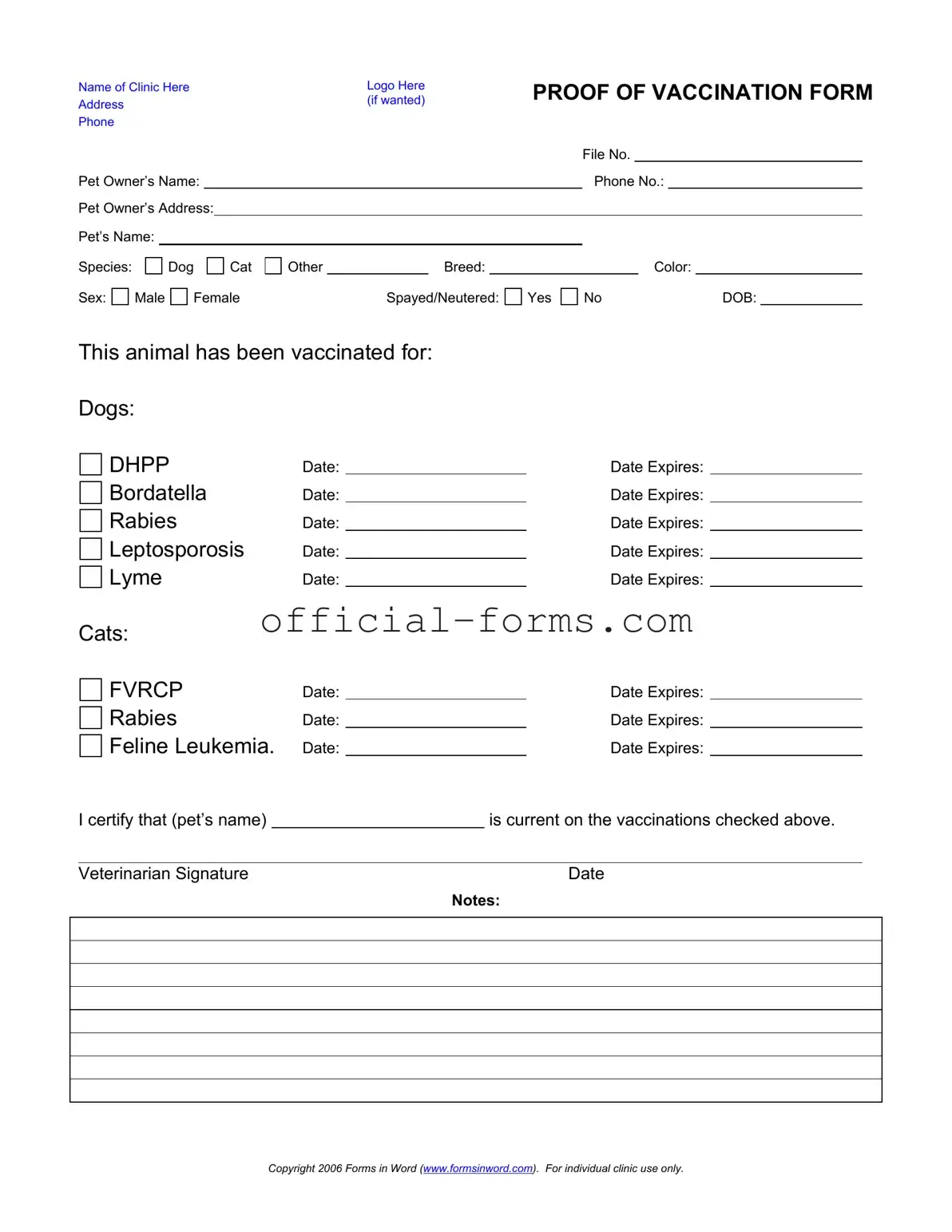When filling out the Proof of Vaccination Dog form, individuals often overlook important details that can lead to confusion or delays in processing. One common mistake is leaving out the pet owner's contact information. This includes not only the phone number but also the address. If a clinic needs to reach out for any reason, having complete information is crucial.
Another frequent error occurs when the pet’s name is incorrectly spelled or omitted entirely. This might seem minor, but an incorrect name can complicate record-keeping and verification. It’s essential to ensure that the pet’s name matches what is on their medical records.
People sometimes forget to specify the species of their pet. While the form allows for options like "Dog" or "Cat," failing to select the correct species can lead to miscommunication. This is especially important in clinics that treat both dogs and cats, as vaccination protocols can differ significantly.
Another area where mistakes are common is in filling out the vaccination dates. Some pet owners may enter the date of vaccination incorrectly or neglect to include the expiration dates. Accurate dates are vital for ensuring that the pet remains compliant with vaccination requirements, so double-checking these entries is advisable.
Additionally, individuals often forget to indicate whether their pet has been spayed or neutered. This information can be relevant for certain vaccinations and may affect the overall health care plan for the pet. It's a small detail that can have significant implications.
Another common oversight is failing to sign the form. The veterinarian's signature is crucial for validating the vaccination records. Without it, the form may not be accepted by various organizations or facilities that require proof of vaccination.
Some people also neglect to check all the vaccinations that have been administered. For instance, if a dog has received the DHPP vaccine but the owner forgets to check that box, it could lead to issues with compliance or health records. It's important to review the list carefully and ensure that all relevant vaccinations are marked.
Lastly, many pet owners do not take the time to read the notes section at the bottom of the form. This section may contain important information about how to properly submit the form or any additional requirements specific to the clinic. Ignoring this part can lead to unnecessary complications.
